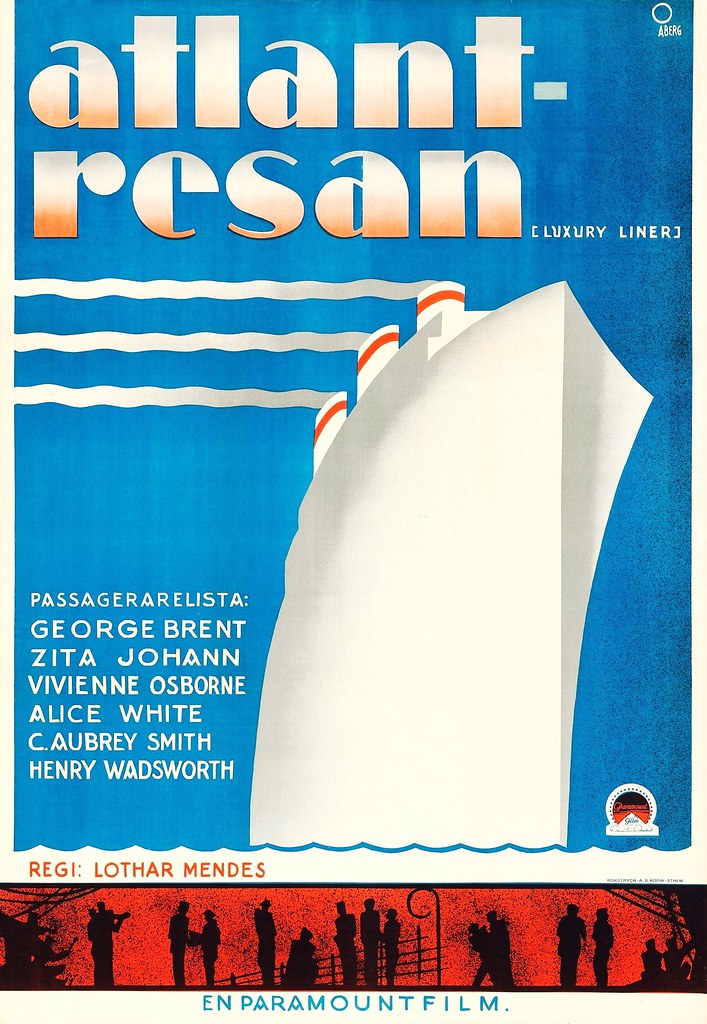#B.P. Schulberg
Text
The stages were freezing in the winter, steaming hot in the summer. The dressing rooms were windowless cubicles. We rode on the freight elevator, crushed by lights and electricians. But none of that mattered, because the writers, directors, and cast were free from all supervision. Jesse Lasky, Adolph Zukor, and Walter Wanger never left the Paramount office on Fifth Avenue, and the head of production never came on the set. There were writers and directors from Princeton and Yale. Motion pictures did not consume us. When work finished, we dressed in evening clothes, dined at the Colony or '21', and went to the theatre.
The difference in Hollywood was that the studio was run by B.P. Schulberg, a coarse exploiter who propositioned every actress and policed every set. To love books was a big laugh. There was no theatre, no opera, no concerts—just those god-damned movies.
~Louise Brooks
0 notes
Photo
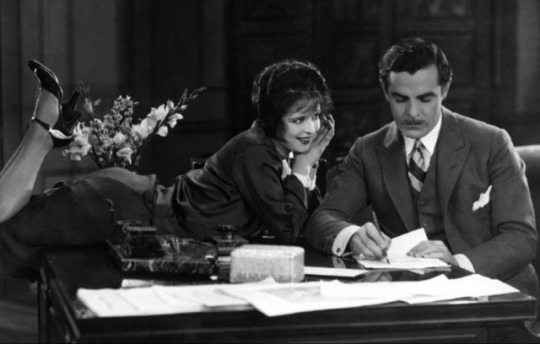
It (1927)
Sexuality in classic Hollywood movies tends to be misunderstood. The steamiest films are the ones that tend not to sell themselves on then-saucy themes – think early romantic comedies by Ernst Lubitsch and films like Gun Crazy (1950). The ones that generate the most noise regarding their depiction of sexuality or sex appeal are usually quite tame. Such was the case for 1953′s The Moon Is Blue (for its use of words like “virgin”, the film was banned from Boston, Memphis, Maryland, and Kansas), as is the case for the subject of this review – Clarence G. Badger’s It. As a vehicle that made Clara Bow the “it girl” of 1927, It is a film designed to strike terror into coulrophobic audiences with its relentless pace and outstanding child acting. You’ll never see Albert Lamorisse’s The Red Balloon (1956, France) the same way ever again! Oh wait, that’s some other movie!
Badger’s It, starring Clara Bow, is based on Elinor Glyn’s 1927 serialized story from Cosmopolitan magazine (Cosmo was a literary-political magazine before the 1960s, similar to The Atlantic) and is adapted by married screenwriters Hope Loring (1927′s Wings) and Louis D. Lighton (Wings, producer on 1937′s Captains Courageous). Glyn, an author of female erotic fiction and who campaigned against the idea of sexuality as a taboo conversational subject, introduced the concept of “it” in this film – which Paramount paid $50,000 for (almost $725,000 in 2018′s USD; it’s one thing to buy the rights to a short story, it’s a stranger thing altogether to purchase the rights to a concept). What is “it”? Well, it depends on when you asked Ms. Glyn. Glyn did not keep her definition consistent in her writing, interviews, or in this film adaptation. But, broadly speaking, “it” can be sex appeal, or this definition as written in Cosmopolitan:
That quality possessed by some which draws all others with its magnetic force. With 'It' you win all men if you are a woman and all women if you are a man. 'It' can be a quality of the mind as well as a physical attraction.
Or perhaps this one of four different explanations from the film’s intertitles (Glyn makes a cameo appearance when she states the following):
Self-confidence and indifference as to whether you are pleasing or not – and something in you that gives the impression that you are not all cold. That's "IT"!
Whatever the hell “it” was – and I’m guessing you, the reader, are fatigued by discussion of “it” by this point (in modern, meme-y parlance, perhaps “BDE” will be more understandable for younger readers) – Clara Bow has it in excess for this film. She meets all the discussed criteria for Glyn’s concept, except for an important aspect. I am not certain that Bow’s character, Betty Lou Spence, has the “quality of mind” requisite for “it”. Given the film’s seventy-two-minute runtime and a silly adapted screenplay by Glyn herself, her character is never given the development necessary for the audience to believe that this is not just another cute Hollywood romantic comedy with a whirlwind romance that we forget about the next day. And that is exactly what It provides: a lackadaisical plot, cardboard characters, and Glyn’s wildly embellished and wooden writing style.
Betty Lou Spence (Bow) works in a department store in New York City, and she instantly crushes on the new manager, Cyrus Waltham, Jr. (Antonio Moreno; what a pretentious name that is for a character). But Cyrus is in romantic cahoots with socialite Adela Van Norman (Jacqueline Gadsden) and he and Betty are separate by several rungs of socioeconomic class. Meanwhile, Cyrus’ friend Monty (William Austin) is interested in Betty and shenanigans resembling screwball comedy start from there. Also important to It is Betty’s roommate, Molly (Priscilla Bonner), who is unemployed, ill, and is attempting to take care of her newborn. Both women are struggling financially, but this is deemphasized after a certain point. The film’s conclusion arrives quickly in an open-sea incident that was executed with less humor but more effectively in a film like Overboard (1987).
Going into It, what I feared was that Badger and Glyn might depict Bow’s character as a gold-digger willing to throw herself onto any fellow she might be interested in. An unwanted advance from Cyrus after an otherwise wonderful date at Coney Island elicits this from Betty: “So you're one of those Minute Men – the minute you meet a girl you think you can kiss her!” She pushes, wrestles him off, and learns that Cyrus is “crazy” about her. Though too many films of classic Hollywood, the Hollywood of today, and popular culture in general glamorize individuals being “crazy” about someone else and showering that someone else with fancy gifts and experiences, Betty knows that what Cyrus is offering is something to avoid. As starved for character development as It is, it is Betty’s independence and need for mutual respectability that quells some of the film’s contradictory messaging. This is a lady who wants glamour and life’s niceties, yes, but disposing her values and getting there on the fawning patronage of a man is not an option.
Does Betty have much of a life outside of preparing for and playing romantic games, however? Can she comprehend that enduring love needs no games or flightiness? We do not see much of this, as It ratchets its charms to maximum. Fitting too easily into the trope of the hardworking, cash-strapped Woman of Morals, Betty shows no signs of ignobility. Physical and situational gags – especially in the film’s final scenes – are present. One of the funniest moments is when Betty is in a French restaurant, the menu is entirely in French, and asks for the “same” as her date. It adds to her character with subtlety and believability. Yet there are narrative distractions, too, mostly surrounding the subplot around Molly’s baby. Cognizant that this subplot results in one of the film’s final laughs, it still feels too forced and hackneyed to add to whatever the film is trying to express (that those who have “it” are never afraid to be themselves?... if so, Betty’s idea to masquerade herself as an upper-class debutante has little to do with having “it”).
No matter one’s reservations with It, Clara Bow’s performance is star-making material in any decade. The personification of a fun-loving woman from the Jazz Age, Bow is spirited in this production where she received little interference from Badger or heavy-hitting producers Adolph Zukor, Jesse L. Lasky, and B.P. Schulberg. One drawback to Bow’s outstanding charisma is the film’s and Bow’s self-awareness of the concept of “it”. Perhaps Elinor Glyn might disagree with me, but someone who has “it” must traverse the boundary between using and abusing “it” (okay, enough of this damn discussion). At times, it feels like her character is embodying the latter – detracting from a tremendous, fun as hell performance.
Following It, Clara Bow became Paramount’s most important contracted star. Too many of the films made at her peak are now lost films, and Bow – despite having a Brooklyn accent that neither executives nor audiences objected to – did not make the transition to talkies. Bow’s preferred acting style, heavy on physical gestures, made the actress dislike synchronized sound productions. She remained popular at the box office, but she retired from acting following a two-film contract with Fox that expired in 1933.
Today, It should be viewed as Clara Bow’s true introduction to movie audiences when it came out – popularizing a concept that, for whatever purposes helpful or harmful it serves, any cultural consumer is at least superficially aware of. For those cultural contributions, It was inducted into the Library of Congress’ National Film Registry in 2001, alongside fellow class members Jaws (1975), Planet of the Apes (1968), and The Sound of Music (1965). As a predecessor to the screwball comedies of the 1930s, It should probably be seen after having viewed some of those aforementioned comedies. Very little separates It aesthetically from other late 1920s silent films, as this film can best be appreciated for what it is: a marker of where American society was at a given time and a decent character piece.
My rating: 7/10
^ Based on my personal imdb rating. My interpretation of that ratings system can be found here.
#It#Clarence G. Badger#Clara Bow#Antonio Moreno#silent film#William Austin#Priscilla Bonner#Jacqueline Gadsden#Elinor Glyn#Josef von Sternberg#Adolph Zukor#Jesse L. Lasky#B.P. Schulberg#TCM#My Movie Odyssey
4 notes
·
View notes
Video
<strong>Luxury Liner (1933 / Paramount) (Sweden) <a href="https://www.flickr.com/photos/klaatucarpenter/">by KlaatuCarpenter</a></strong>
The poster illustration is by Gösta Åberg.
#Gösta Åberg#movie poster#Sweden#George Brent#Zita Johann#Vivienne Osborne#Verree Teasdale#Frank Morgan#C. Aubrey Smith#Lothar Mendes#Gina Kaus#Die Uberfahrt-novel#Gene Markey#Kathryn Scola#B.P. Schulberg#Victor Milner#Travis Banton#Bernhard Kaun#black & white#1930s#advertising#illustration#movies
7 notes
·
View notes
Photo

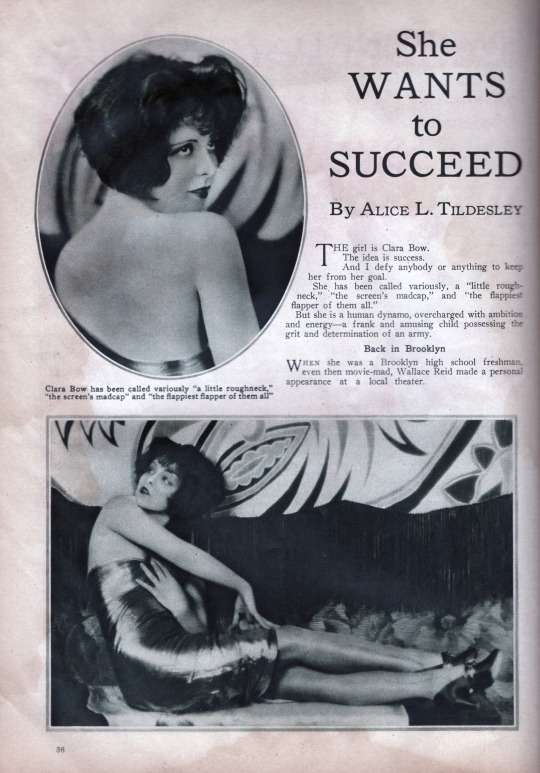

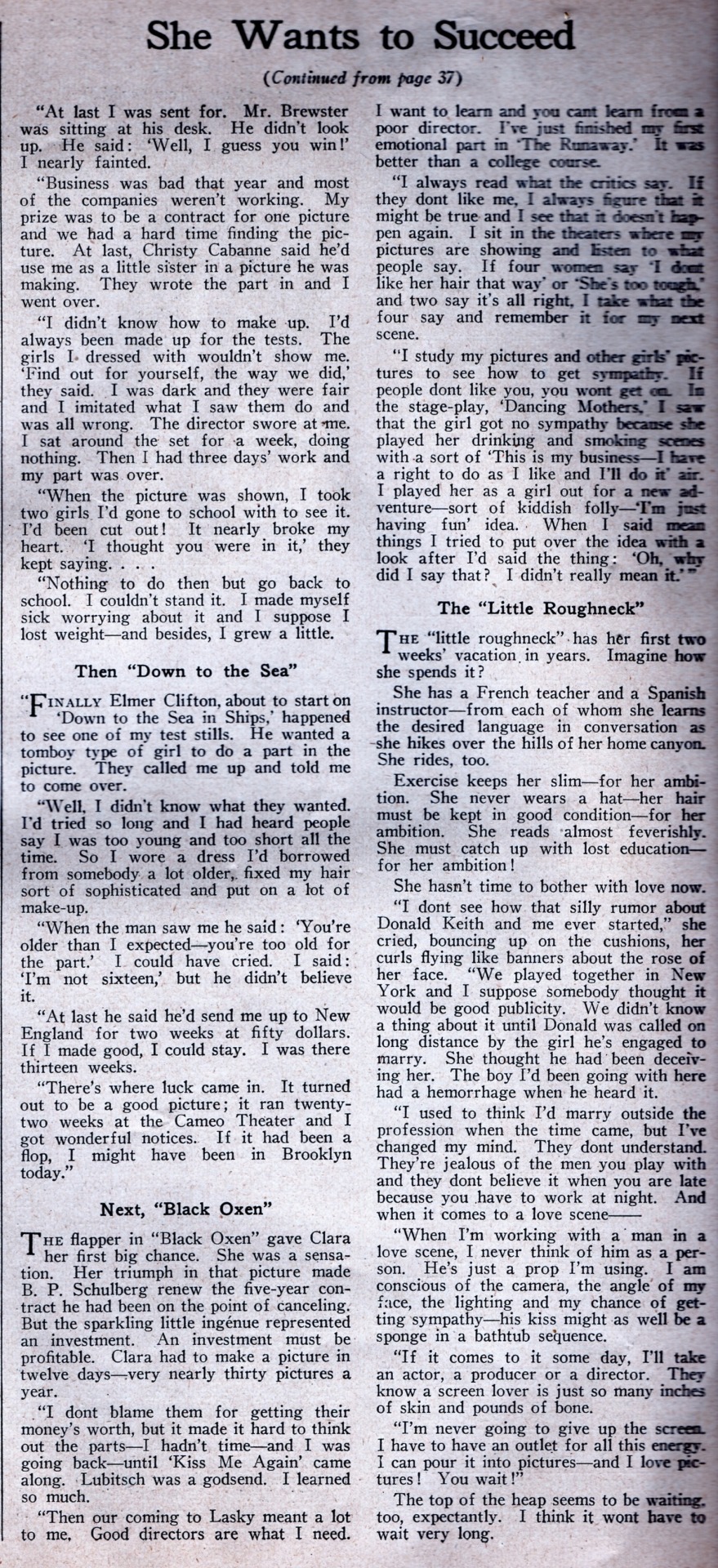
Motion Picture Classic: June, 1926
Cover portrait of Clara Bow by Don Reed
“She Wants to Succeed” by Alice L. Tildesley pages 36-37, 90.
#Clara Bow#vintage#film history#1926#Motion Picture Classic#magazine#Don Reed#Alice L. Tildesley#Wallace Reid#Ernst Lubitsch#B.P. Schulberg#fame#family#fame and fortune#Clara Bow Archive
27 notes
·
View notes
Text
In remembrance of actress Clara Bow, who passed away on this day, September 27th, 1965 🖤🖤🖤
PART THREE

Clara Bow in Her Wedding Night (1930)
DID YOU KNOW?...
-Kristin Hersh wrote a song about her for the band 50 Foot Wave entitled "Clara Bow." It appears on the band's debut album "Golden Ocean".
"50 Foot Wave is the mark of a woman without a shred of complacency. Former front-woman is back after years of solo work and sporadic reunions. This new project finds Hersh, along with Muses bassist Bernard Georges and new drummer Rob Ahlers, cranking up and streamlining. Their self-titled EP debut was a 16 minute blast of punk rock aggression matched with Hersh's lyrical dexterity and intense vocal approach."

"Golden Ocean extends the formula to end up with 11 songs in 35 minutes. Always a master of idiosyncratic connections, Hersh combines disparate elements into cohesive songs, giving the listener a new view of the world--or at least insight into hers. "Long Painting," "Dog Days," "Ginger Park," and "Clara Bow" are all good examples of her fury born of experience. In fact, nearly all the songs here deal with the life-learned oxymoron of, "the more you know, the less you know". Both angry and affirming, this release shows a band gaining strength with each offering." --Robert Arambel
-She was billed as "The Hottest Jazz Baby in Films" by independent producer B.P. Schulberg for The Plastic Age (1925).
"Hollywood and the movie-going public embraced the actress with the sparkling eyes, cupid's-bow mouth and vibrant personality. Paramount billed her as "the hottest jazz baby in film," making reference to her unapologetic sexuality."
-Chicago Tribune
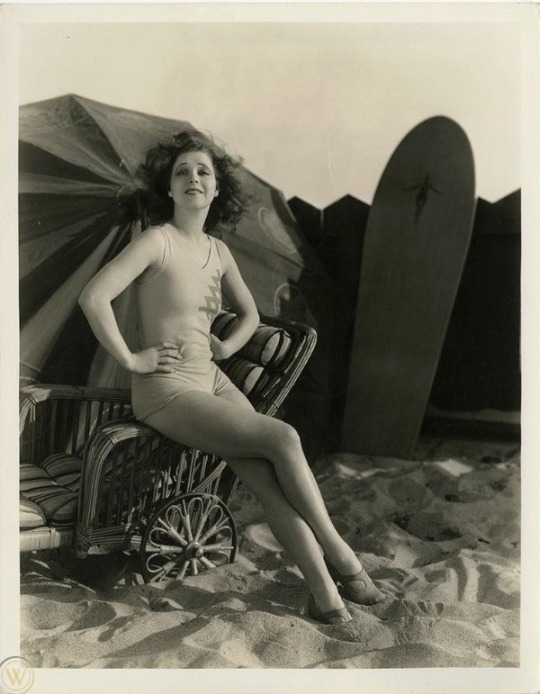
-Bow applied her red lipstick in the shape of a heart. Women who imitated this shape were said to be putting a "Clara Bow" on their mouths.

When you think of 1920s lips you think of the famous 'Cupid's Bow'. Cupid Bow lips were favoured and made popular by Hollywood stars like Clara Bow and Mary Pickford.
Makeup artist Max Factor created the 'Cupids Bow' which was first ever seen on Clara Bow, women soon started copying Bow's lips and the famous flapper craze took off.

Lip colours came in shades of pink, red and orange. Popular lipstick names were; scarlet, rose, raspberry, poppy, cerise and carmine.
The early 1920s lips were darker, like claret or plum.

The upper lip was a heart-shape and the lower lip was applied to just miss the outer edges. This created a smaller bee-stung looking lip.

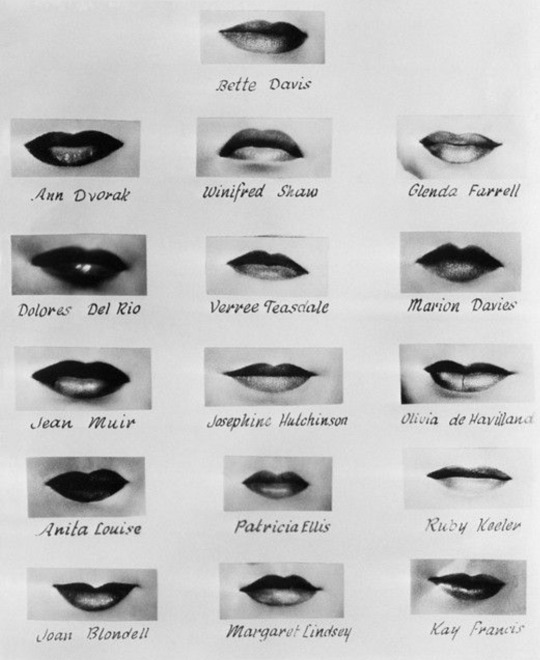
Metal lip tracers were sold to help women who found it difficult to create the ideal lip shape themselves.
-1928: She became the highest paid movie star, receiving $35,000 per week.
With "talkies," The Wild Party, Dangerous Curves, and The Saturday Night Kid, all released in 1929, Bow kept her position as the top box-office draw and queen of Hollywood.
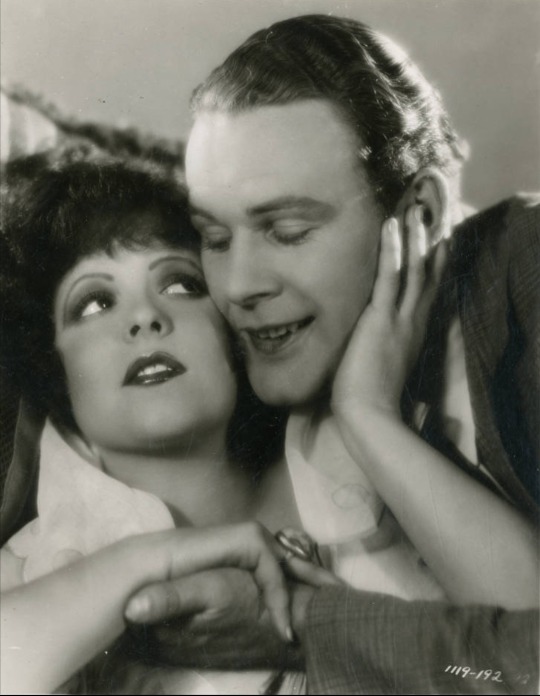
Clara Bow and Lane Chandler in Red Hair (1928)
-F. Scott Fitzgerald described Bow in 1927 at the peak of her fame: "Clara Bow is the quintessence of what the term 'flapper' signifies as a definite description. Pretty, impudent, superbly assured, as worldly wise, briefly clad, and 'hard-berled' as possible... Now, there are thousands more [flappers] patterning themselves after her".
There were different kinds of flappers, but he thought all of them had a "common trait," which was "a splendid talent for living."
Flapperhood flourished throughout the social classes: sales clerks, secretaries, hatcheckers and hairdressers were flappers, as were privileged belles like Zelda Fitzgerald. Zelda Fitzgerald was an American novelist, socialite, and painter. Born in Montgomery, Alabama, she was noted for her beauty and high spirits, and was dubbed by her husband as "the first American flapper". She and her husband, F. Scott Fitzgerald, became emblems of the Jazz Age, for which they are still celebrated.
In 1922 she wrote that the flapper told herself, "I do not want to be respectable because respectable girls are not attractive" and "boys do dance most with the girls they kiss most." So the flapper "bobbed her hair, put on her choicest pair of earrings and a great deal of audacity and rouge and went into battle. She flirted because it was fun to flirt . . . she covered her face with powder and paint because she didn't need it and she refused to be bored chiefly because she wasn't boring." At 21, Zelda Fitzgerald declared that a young woman had "the right to experiment with herself as a transient, poignant figure who will be dead tomorrow."
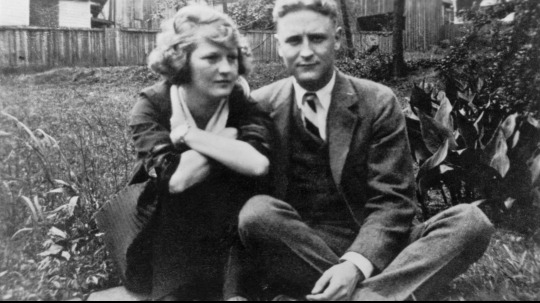
Zelda and F. Scott Fitzgerald.
Sources: IMDb.com
wikipedia.com
#clara bow#clara bow history#clara bow's life#1920s hollywood#1920sfashion#1920s films#1920s celebrity photos#1920s celebrity history#1920s flappers#1920s cinema#1930smovies#1930sfashion#1930s hollywood#1930s cinema#1930s films#1930s celebrity photos#old hollywood#old hollywood stars#old movies#old films#vintagephotos#vintagewomen#vintagefashion#vintage hollywood#vintage films#vintage cinema#vintage celebrity photos#iconic vintage celebrities#iconicfilms#stunning celebrity photos
7 notes
·
View notes
Photo
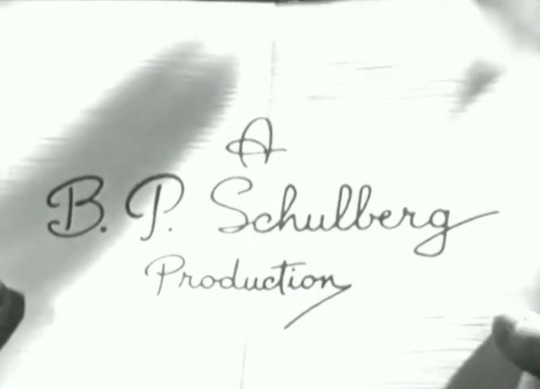
B.P. Schulberg was Paramount’s head of production in the early days. He lived in an old mansion in Hancock Park where he raised a son named Budd Schulberg.
5 notes
·
View notes
Text
The real Clara Bow.
"(I'm) just a woikin goil"
Source: Clara Bow
And a working girl she was. During her rise to fame and eventual stardom Clara Bow, one of the most popular and talented actresses the screen has ever produced and the ultimate ideal of the 20s flapper, was the most overworked and underpaid star then in Hollywood. Producer B.P. Schulberg had her under personal contract and steered Clara's career becoming his greatest meal ticket. But fame hadn't come easy to this Brooklyn bombshell.
Clara was born into the world on July 29,1905.And her childhood was nothing but unsettled. Her home life was a shambles as her father was an alcoholic, abusive and a womanizer. Her mother had come from a similar background and was given to regular mental "bouts". As a result Clara became quite sensitive and shy and developed a slight speech impediment. When she was old enough the streets more often than not were her home away from home when her father or mother proved too much. She became quite the tomboy but a tomboy who frequented the movies any chance she could get. She would do anything she could to earn money to help pay for her movie habit and to help her father with keeping the household together, as her mother was not able to work steadily for any length of time. Her favourite movie actress was Mary Pickford and she would stand in front of a mirror emulating her.
In January 1921 Motion Picture Magazine sponsored a "Fame and Fortune" contest. Clara saw the ads and badly wanted to give it a try. At that moment she didn't have enough money for the two photos that she would need for the contest entry so she sheepishly approached her father. Unexpectedly her father not only agreed but accompanied her personally to the photographer's studio and paid the $1.00 for the shoot. A few days later she attended the offices in New York of Motion Picture Magazine and was crestfallen when she entered to find it crammed with many lovely looking girls, all there for the same reason. Looking at some of the beautifully dressed wanna be's, she figured she didn't have a chance but she had come too far to give up so she persevered through the obligatory interview with the magazine staff and returned home to await the decision.
A month or so later Clara was given the astounding news that it was she out of all the others, that had been picked as the magazine's winner;she was floored. Soon after she was given a small part in a movie called "Beyond The Rainbow". The part was so small that it was excised from the original release prints but later when Clara's star had risen to such phenomenal heights they reinserted it and re-released it. One night after work had been completed on the film Clara awoke to find her mother standing over her holding a butcher knife. Her father and Clara had been trying to keep anything about her film ambitions quiet, but her mother had gotten wind of it and this night was threatening to use the knife. Clara as calmly as she could talked her mother into surrendering the knife to her. Clara prayed that there would be no such other instances but shortly after the film's release her mother attacked Clara once more. She chased Clara around and around the room screaming that no daughter of hers was going to go into such a questionable and perverted occupation. Clara retreated to the streets sobbing and it took her father some time to calm her mother down. After the dust had settled her father quietly made inquiries and eventually had his wife put into an asylum. And it was there her mother passed away just a few months later in early 1924.
Clara was now under personal contract with Hollywood producer B.P. Schulberg who had seen her work in "Down to the Sea in Ships ", her other 1922 effort. She would complete three movies in 1923 and moved on into 1924 doing an astounding eight pictures.1924 would prove to be a watershed year for her. She was picked as one of the W.A.M.P.A.S. (Western Associated Motion Picture Advertising Society) girls and the only one of the group that actually went on to better things. Then Schulberg moved on to Paramount studios taking his young protege with him. And Clara was getting much needed attention from critics and business insiders alike. Her star was definitely on the rise.
Clara's schedule was even more hectic in 1925 for it saw no less than 14 films released!.1926 saw Clara do eight films among them "Mantrap " with Ernest Torrance which really made Clara a star and "Kid Boots" starring a well known vaudevillian making his screen debut, Eddie Cantor. "Kiss me Again" was significant in that it showed off Clara's range as an actress in a more serious role. She garnered great reviews for her part but this was one of the very few serious roles she would get in her career. Directors Victor Fleming and Paul Bern stated on several occasions that Clara could be one of the greatest dramatic actresses of her time It is so unfortunate Hollywood didn't have the foresight and guts to stick her in other than formulaic roles featuring her as a "modern" girl, a flapper and emphasizing her sexuality. They realized they could stick Clara in any kind of picture no matter how bad the script and because of her sheer presence and forcefulness she would carry the day. And as long as his meal ticket was making money B.P. Schulberg was quite happy to keep the status quo.
But it was a visit on a set by British author and sex maven Elinor Glyn that kicked Clara's career up another big notch. She had written several novels on relationships between couples that were very daring for their day. Elinor watched Clara work and declared that she had "It". An energy or sexually charged charisma and magnetism that affected everything and everyone around her. And it was this "It" that made her glow on the screen .And there is no doubt Clara lit up the screen. And 1927 was to showcase Clara at her finest. She starred in about seven vehicles that year but two are standouts. The first is "It" and it did indeed capitalize on Clara's "personality" but it also featured a walk on by Elinor Glyn herself to give the movie it's obvious tie in. It was about a department store clerk who falls in love with the young owner of the store that she works in. It had all the typical mix ups, tears and laughter associated with that type of movie but it showed Clara off to great advantage and the film still stands up extremely well today.
The second film was "Wings" and was set during the First World War and it co-starred Richard Arlen and Buddy Rogers as two fliers who see action overseas. Clara who always had a crush on Buddy meets up with him in France while driving an ambulance there. There was quite a few touching scenes throughout the movie involving Clara. In fact the movie has quite a serious feel to it throughout especially through it's realistic depictions of aerial combat in the war and its consequences. But when Clara is on screen the movie literally comes alive. It is a testament to her ability as an actress that she could do that repeatedly, picture after picture. And it's in no small way that she helped the film win the first Academy Award for best picture that year.
1927 went into 1928 and her film output continued unabated as did her career. She starred in four pictures that year; "Red Hair" and "The Fleet's In " being standouts. But 1929 would prove to be an unnerving one for many actresses and actors and Clara Bow unfortunately was one of them.
Clara was at the top of her game. She was often seen driving around Hollywood in a flame red car (a Kissel or Stutz-Bearcat depending on the story) with one or more of her auburn coloured Chow dogs. She was known quite well in the neighbourhood by the local constabulary who would frequently drop in at the rear entrance to her home to have a cup of coffee and sandwiches and have a chat. Clara was frequently linked with many men over the years and was a constant source of gossip for the papers to engorge. One incident was a touch football game she played on her front lawn with the University of Southern California Football team. Everyone had such a great time that she invited them over again. This incident got turned inside out until one read that Clara had slept with every member of the USC football team! Another incident that didn't help Clara's reputation at all involved Clara attending a gambling establishment in Lake Tahoe. It was reported she had welshed on a gambling debt while playing there. She had gotten into an argument with staff personnel and refused at first to pay but it she eventually settled. But not before the incident had leaked out and done some damage publicly.
Clara was a very trusting and unassuming individual and often wore her heart on her sleeve. She was in reality a very insecure person and she many times publicly decried that her past home life had left many a scar on her emotionally. And she also stated that mentally she could just not shut down and was always worrying about something and had insomnia.In point of fact Clara had become overworked and overwrought. What happened in 1929 sent Clara hurtling precariously towards the edge.
The movie industry had been experimenting with sound pictures from the early 1920s.But it was Jolson's "The Jazz Singer" in 1927 (little dialogue but with musical numbers) and the first full talking movie in 1928 "Lights of New York", that broke the dam wide open and there was no turning back. But the big question was how everyone was going to sound, literally. Many actor's didn't have the vocal capability of transitioning from silence into sound and as a result found themselves leaving the business. In those days sound was monitored from a booth, and especially in the early days the microphone was static and immovable. Actor's would have to know where the mike was and dutifully stand within its' range to be recorded properly. The camera's were put into sound proof boxes where the camera's whirring would not be picked up by the mike. Consider this December 1929 Photoplay article excerpt:
"Terrible Mike has cooled down the incandescent flapper-he's giving her an awful kick, and is putting Poor Old lady Has-Been on the Throne"
It was a stifling environment in which to work and for Clara this was definitely another pressure which she did not need.
The making of "Wild Party", her first talking picture, was anything but smooth. Clara was overwrought with the added pressure of having to know where and when to stand and was now having to pay attention to her annunciation as well as her voice level. In fact it has been reported that in her run through for her very first scene as she comes in and says:" Hello Everybody" all the sound valves in the sound booth exploded! Clara would more than once become so upset she would run off the set crying. But the movie was made and Clara showed she had not lost "It" and it garnered great reviews. Clara's voice came over very well and was able to rise well above the primitive recording techniques of the day.
But Clara's career was slowly grinding to an inevitable end and "Mike" was the least of her worries.
Clara would make between 1929 and 1933 10 more pictures and all quite successful. Her last two "Call Her Savage" and "Hoopla" were especially good vehicles for her and showed off her acting ability to its best. But strangely they weren't successful at the box office.
In January of 1931 Clara was involved in a very public trial in regards to her former personal secretary Daisy Devoe who it was claimed had mishandled Clara's funds. While Clara did not want to press charges the police saw fit to carry it through the court system anyways and many personal details of Clara's life came out during the trial. Clara was forced to testify but was in tears much of the time. When the verdict came down about a month later Devoe was sentenced to 18 months in jail. It was plain that Clara, as usual, had been much too trusting with her employee and when asked about the trial, being the person she was ,she could not kick Devoe even when she was down, it wasn't her nature:
"The trouble with me is, I'm no sneak....I may have made mistakes...But my greatest mistake seems to have been that I was open and above board with everything".
On December 4,1931 Clara married cowboy actor Rex Bell who she had been dating steadily for the last two years. They bought a ranch in Nevada and Clara would retire there permanently. But Clara was her mother's daughter and some of the same type of inflictions that harried her mother would eventually also do the same to Clara. The pressure of the last few years with sound, her personal life being spread more and more across headlines much of it exaggerated or totally untrue and her realization, albeit late, of her true worth and what the pittance was she actually received, in the end proved too much for the fragile Clara to cope with.
Clara would spend much of her retirement years in and out of sanitariums and on drugs of one type or another to control her condition. She would always remain an insomniac and stated that the nights would always be the hardest.
Clara had two sons one in 1935 and the other in 1938.Rex eventually gave up movies for a life in politics and by 1954 was the lieutenant governor of Nevada. In July of 1962 Rex died of a heart attack and Clara went all the way to Glendale, California to attend the funeral . Afterwards she retired back to the ranch and seclusion once more.
To pass the time away in her final years she would often send letters off to stars that she admired and even answered fan mail that came to her. She would spend her days swimming and reading while at night television was her favourite pass time. . On September 27,1965 while watching the " Late, Late Show" she passed away quietly in her chair.
In the late 1960s when film historian Kevin Brownlow wrote his fine work: " The Parade's Gone By" about silent films and their stars he completely overlooked Clara Bow and her works. Louise Brooks, a contemporary of Clara's, wrote to Mr.Brownlow the following:
"You brush off Clara Bow for some old nothing like Brooks. The more I think about it the madder I get .Clara made three pictures which will never be surpassed, 'Dancing Mothers', 'Mantrap', and 'It' "
And Louise Brooks was right. Clara has been largely forgotten and overlooked as time has passed by many critics and historians. And this is a travesty.For to watch Clara Bow today is to see a human dynamo, a force onto her own who literally brings the screen to life with her presence alone. But there was more to her than just "It" and she could act alongside the best of her day and in many instances surpass them at their own game. This was a star of the highest order. She defined an entire generation and she still touches us as equally today as she did over 70 years ago. She was an original. She was....Clara Bow.
1 note
·
View note
Photo

Birthday tribute to B.P. Schulberg with Dolly Parton! #CelebratingStars #BPSchulberg #DollyParton https://bit.ly/3q1NeSf
0 notes
Photo
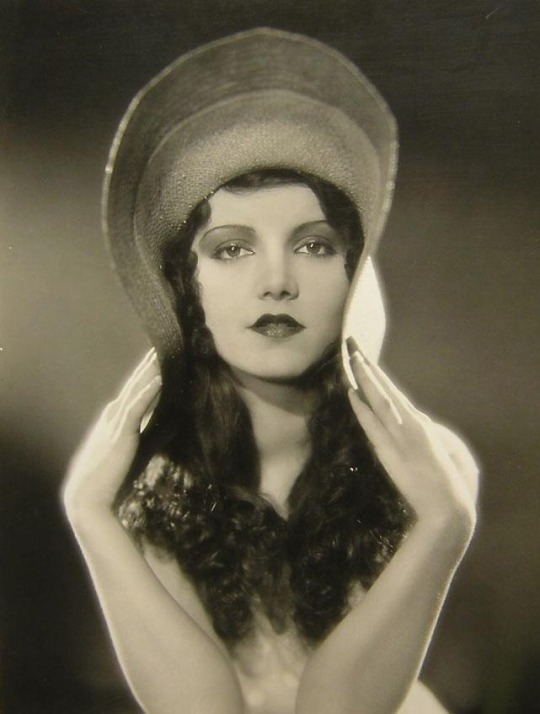
Peggy Shannon was born Winona Sammon on January 10, 1907 in Pine Bluff, Arkansas. Her parents were Edward and Nannie Sammon. She was later joined by younger sister, Carol.
When she was still in high school, she went to New York to visit an aunt. It was while on this visit, she was hired to be a Ziegfeld showgirl. She stayed with Ziegfeld and other Broadway shows until 1927 when she was discovered by B.P. Schulberg, the production head of Paramount. She packed her bags and followed him out to Hollywood.
0 notes
Photo

Fredric March tells Jessie Henderson about a funny encounter he had with producer B.P. Schulberg while filming Dr. Jekyll and Mr. Hyde (1931):
“One evening I’d done the rain scene over and over. In fact, I’d been doing it the whole afternoon. The last straw was the information that we’d have to work most of the night. I was worn out, and soaking wet, and mad.
"So I left the stage and rushed over to B.P. Schulberg’s office, determined to take my troubles right to the producer himself. ‘You weren’t here at any six in the morning,’ I said, ‘you haven’t been working since the break of day. You don’t have to hang around till midnight’… There was lots more of it. I didn’t care at the moment whether I kept on being an actor at that studio or not.
“Mr. Schulberg kept his face straight–" March threw himself back on the couch in the trailer-dressing room and burst into hearty laughter. “Mr. Schulberg kept his face straight,” he repeated, “but it’s more than I can do when I visualize how I must have looked.
“Can you imagine a producer glancing up from his desk to see ‘Mr. Hyde’ on the office threshold? That horrifying makeup, and mad as fury, and dripping the last sound stage rainstorm all over the rug? Besides, over my own I had false teeth for the ‘Mr. Hyde’ effect, and if I didn’t watch out they got in the way— Can you imagine those teeth gnashing? I must have been a sight, no mistake!
“Mr. Schulberg, however, was courteous, attentive, and serious. He didn’t hint it at the time but he told me afterward that he had all he could do not to roar, he’d never seen anything so funny in his life.”
Hollywood, October 1938
#imagine being a fly on the wall in that office#lmaooo#my post#fredric march#b.p. schulberg#dr jekyll and mr hyde#bts#quotes#pre code#hollywood magazine#vintage magazine#1931#1938#1930s#old hollywood
45 notes
·
View notes
